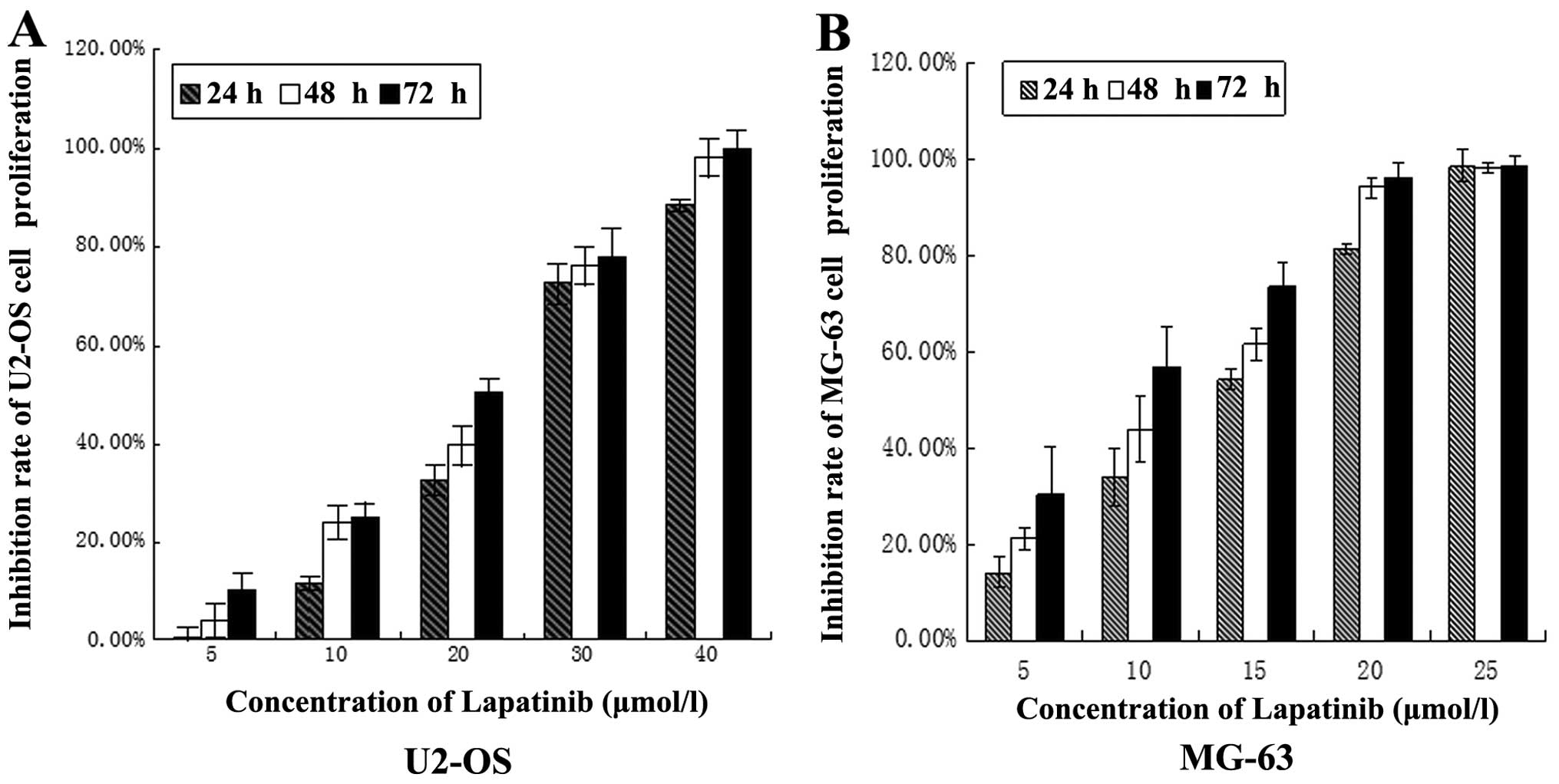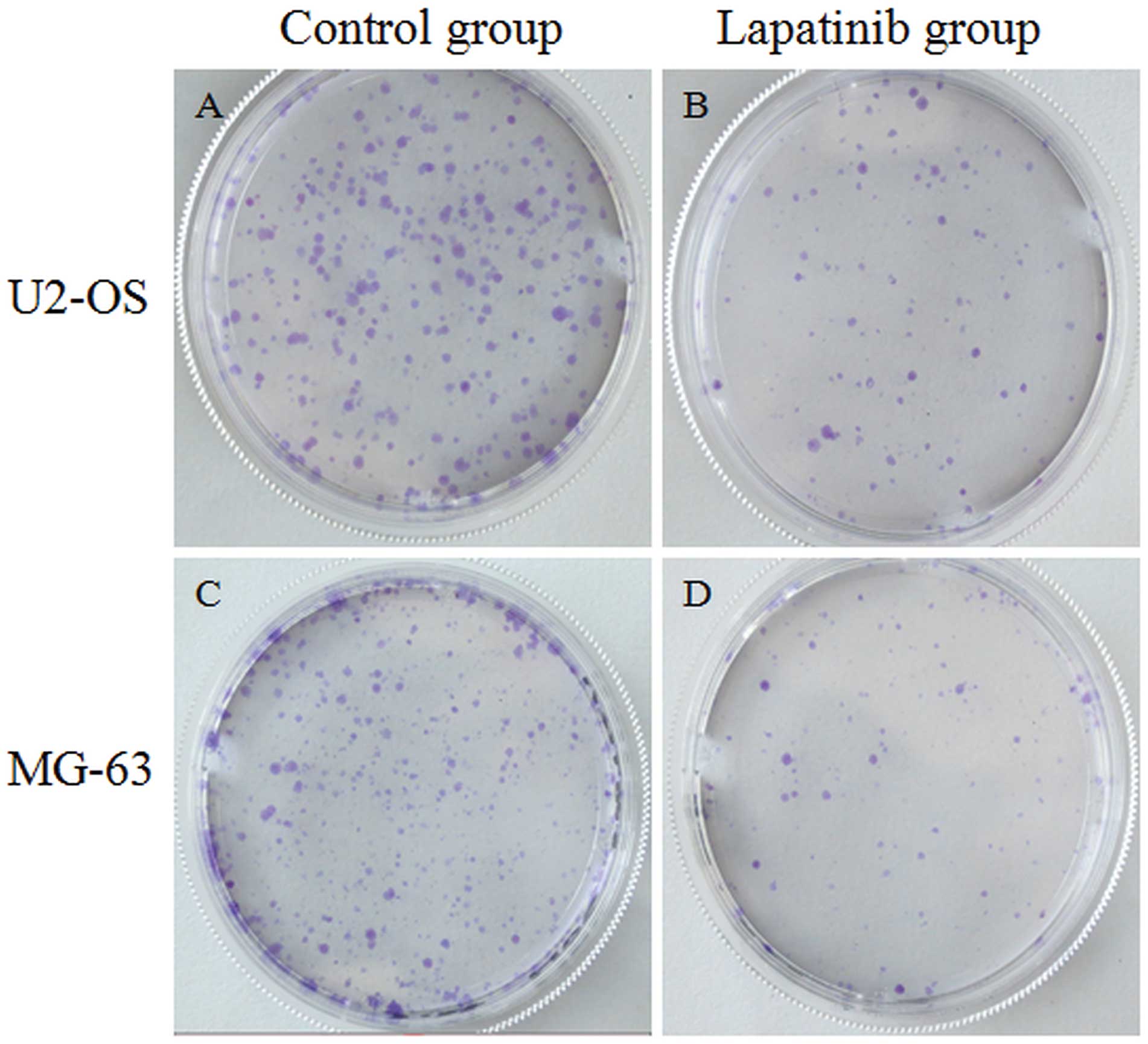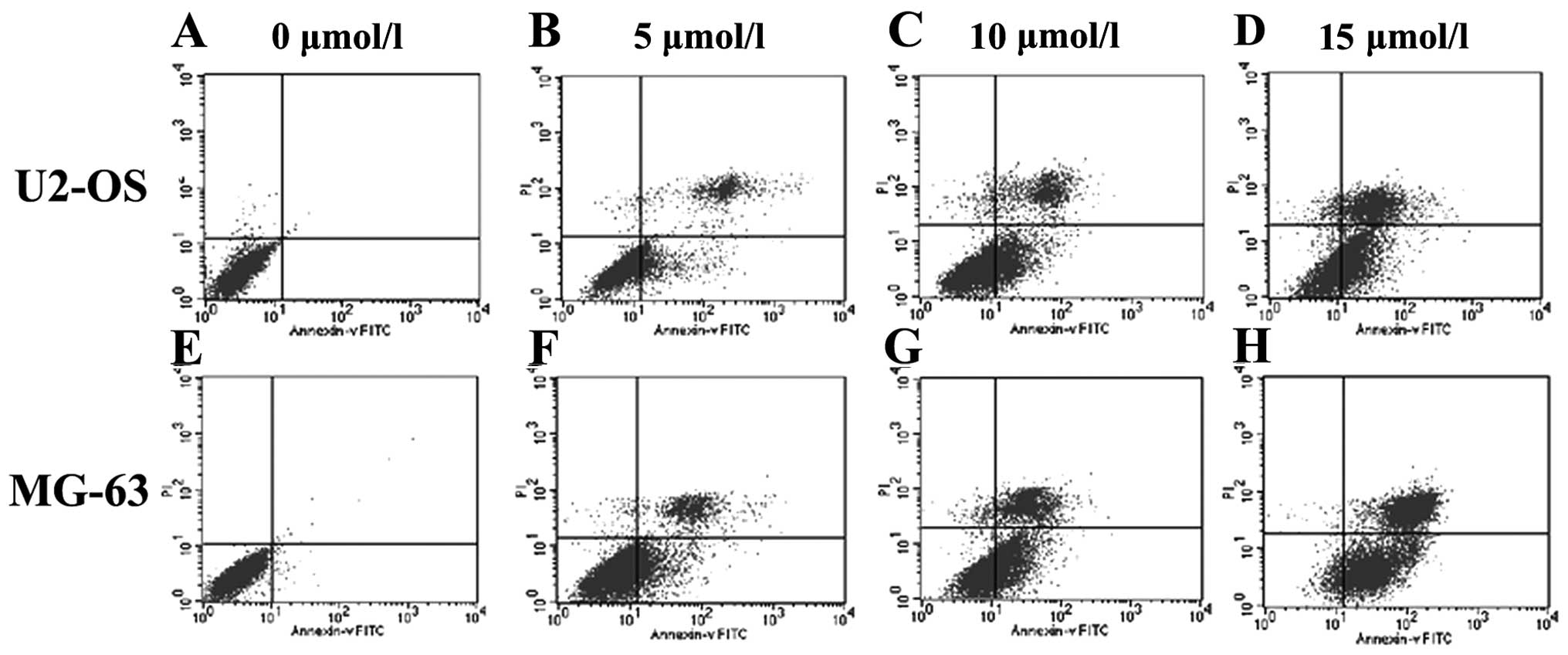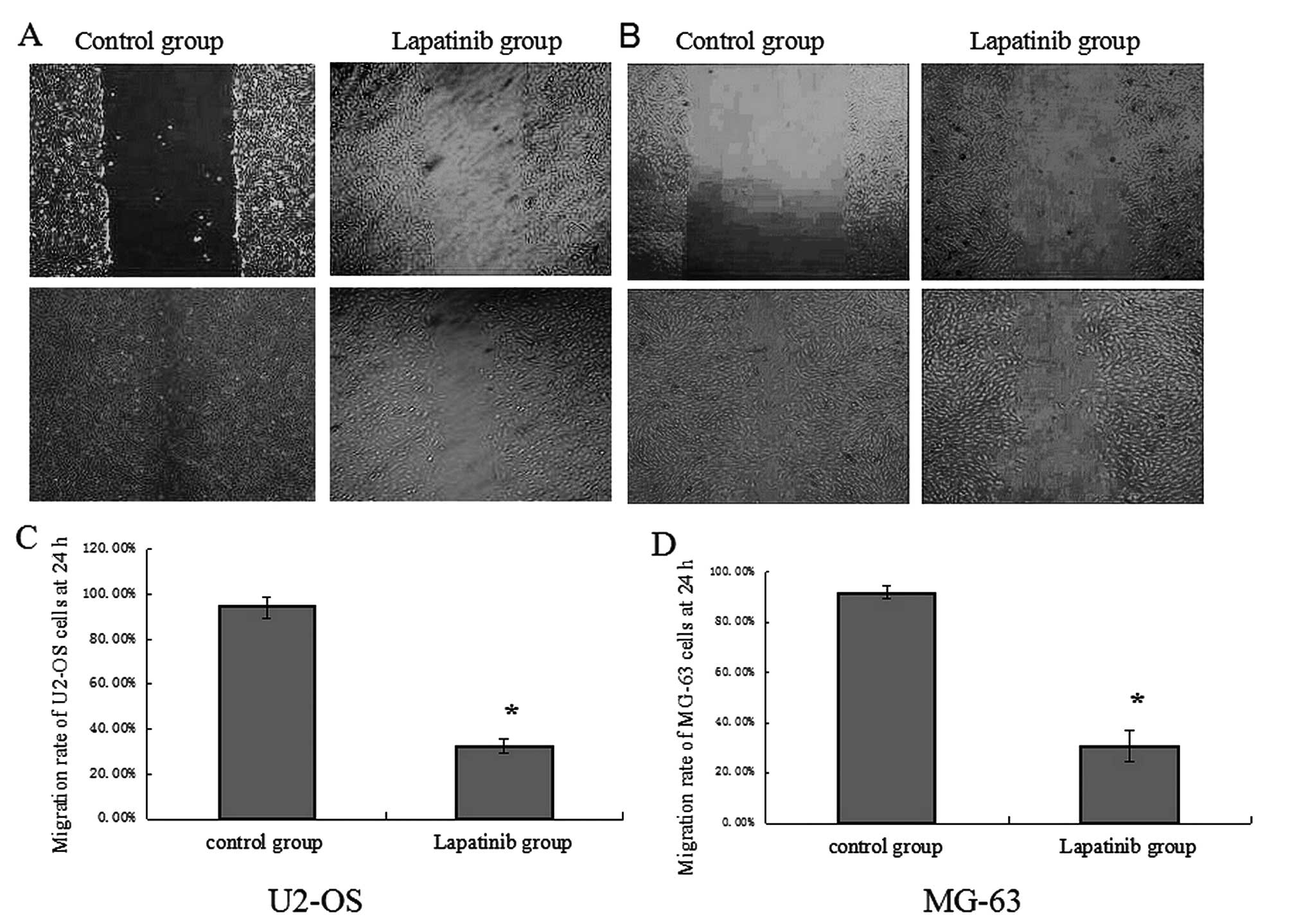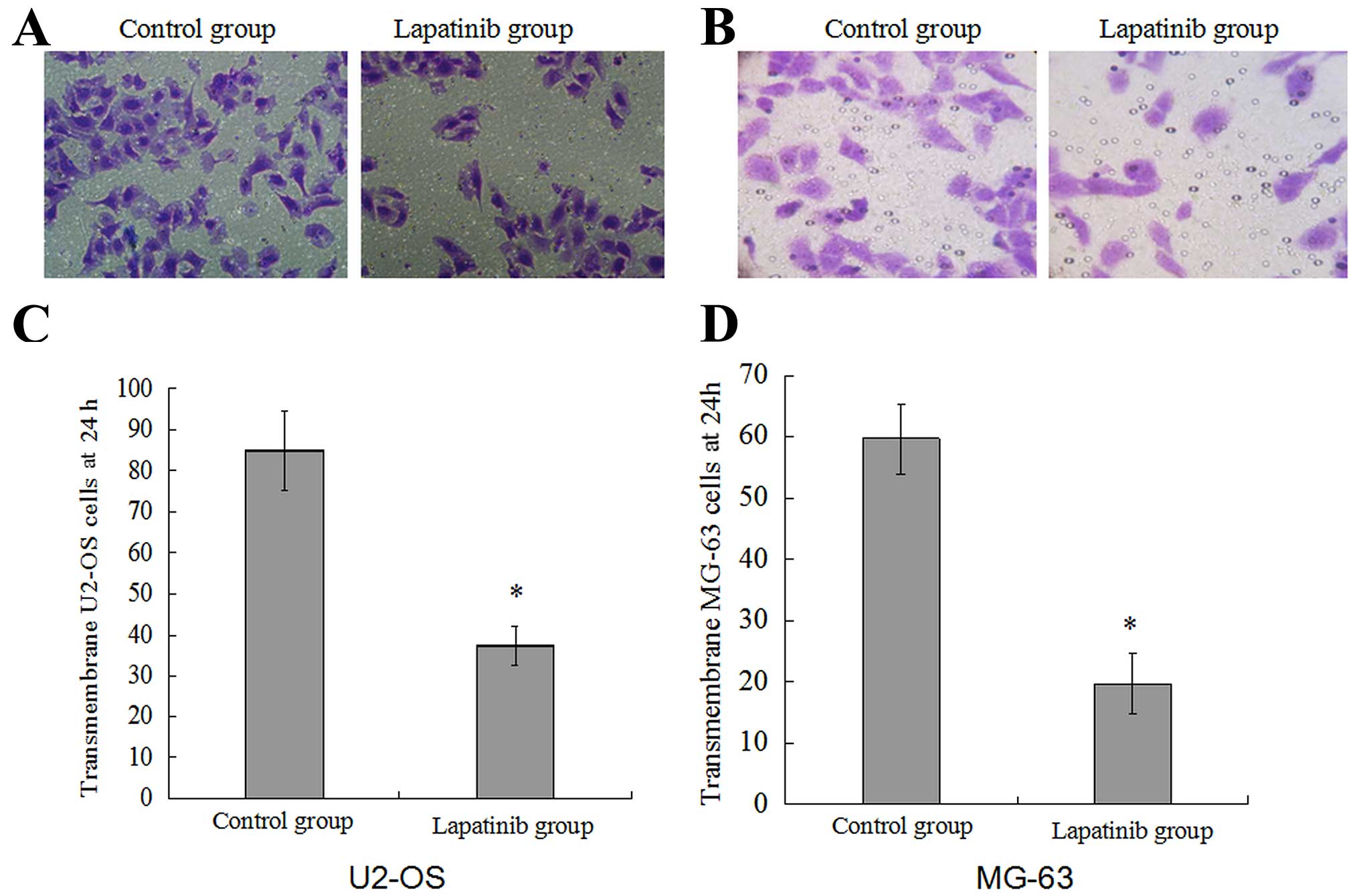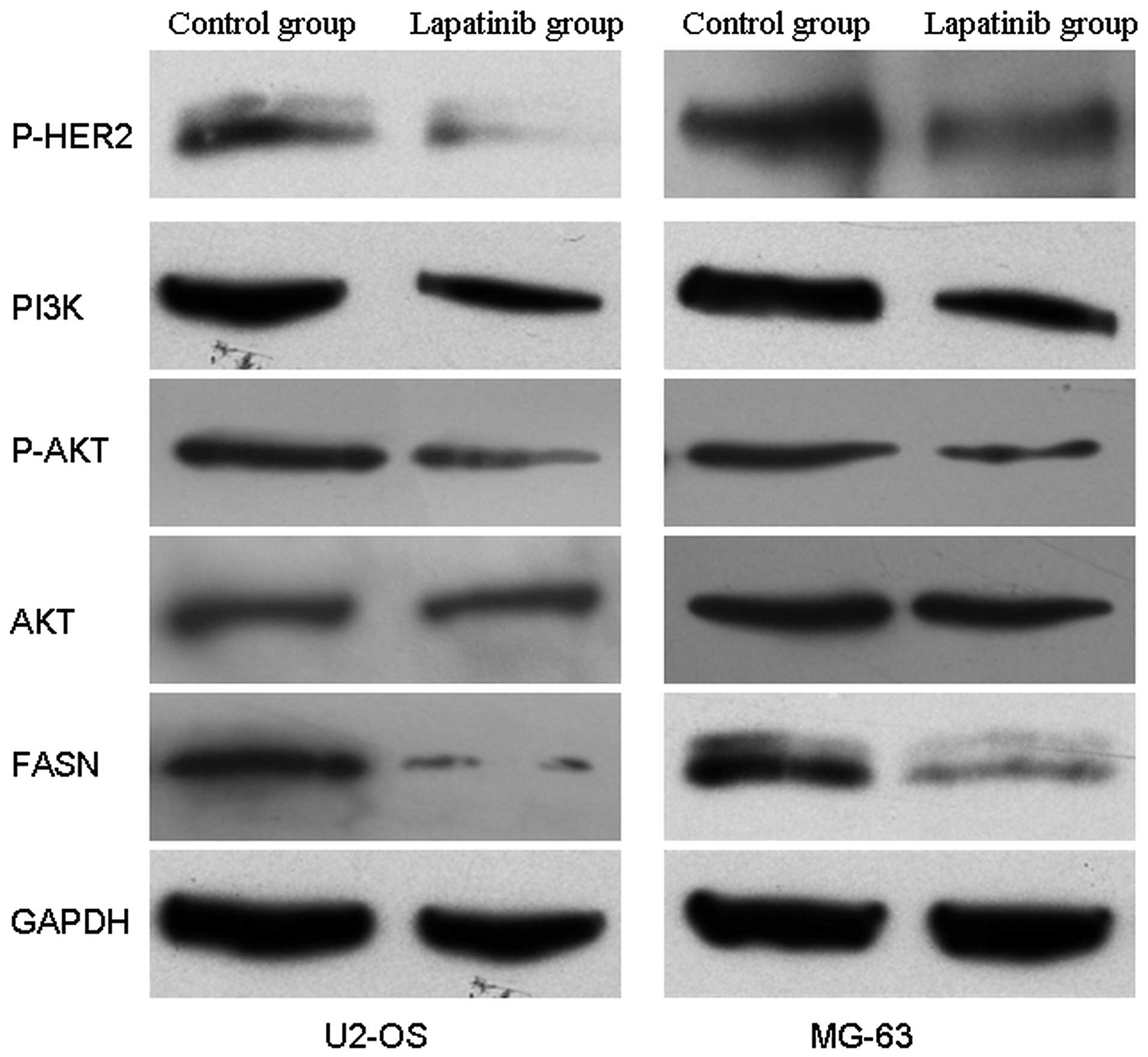|
1
|
Meyers PA, Schwartz CL, Krailo M,
Kleinerman ES, Betcher D, Bernstein ML, et al: Osteosarcoma: a
randomized, prospective trial of the addition of ifosfamide and/or
muramyl tripeptide to cisplatin, doxorubicin, and high-dose
methotrexate. J Clin Oncol. 23:2004–2011. 2005. View Article : Google Scholar : PubMed/NCBI
|
|
2
|
Bacci G, Forni C, Longhi A, Ferrari S,
Mercuri M, Bertoni F, et al: Local recurrence and local control of
non-metastatic osteosarcoma of the extremities: a 27-year
experience in a single institution. J Surg Oncol. 96:118–123.
2007.PubMed/NCBI
|
|
3
|
Jawad MU, Cheung MC, Clarke J, Koniaris LG
and Scully SP: Osteosarcoma: improvement in survival limited to
high-grade patients only. J Cancer Res Clin Oncol. 137:597–607.
2011. View Article : Google Scholar : PubMed/NCBI
|
|
4
|
Brand RA: 50 years ago in CORR: the
present trend in treatment of osteogenic sarcoma. Clin Orthop Relat
Res. 467:3038–3039. 2009.PubMed/NCBI
|
|
5
|
Ferrari S, Smeland S, Mercuri M, Bertoni
F, Longhi A, Ruggieri P, et al: Neoadjuvant chemotherapy with
high-dose Ifosfamide, high-dose methotrexate, cisplatin, and
doxorubicin for patients with localized osteosarcoma of the
extremity: a joint study by the Italian and Scandinavian Sarcoma
Groups. J Clin Oncol. 23:8845–8852. 2005. View Article : Google Scholar
|
|
6
|
Gradishar WJ: Emerging approaches for
treating HER2-positive metastatic breast cancer beyond trastuzumab.
Ann Oncol. 24:2492–2500. 2013. View Article : Google Scholar : PubMed/NCBI
|
|
7
|
Shanmughapriya S, Senthilkumar G, Arun S,
Vinodhini K, Sudhakar S and Natarajaseenivasan K: Polymorphism and
overexpression of HER2/neu among ovarian carcinoma women
from Tiruchirapalli, Tamil Nadu, India. Arch Gynecol Obstet. May
31–2013.(Epub ahead of print).
|
|
8
|
Zhou BG, Liu MY, Qiu XC, Xu YM, Fan QY,
Yang AG, et al: A novel recombinant immunocasp-6 fusion gene
specifically and efficiently suppresses HER2-overexpressing
osteosarcoma. Oncol Rep. 29:276–282. 2013.PubMed/NCBI
|
|
9
|
Ma Q, Zhou Y, Ma B, Chen X, Wen Y, Liu Y,
et al: The clinical value of CXCR4, HER2 and CD44 in human
osteosarcoma: a pilot study. Oncol Lett. 3:797–801. 2012.PubMed/NCBI
|
|
10
|
Scotlandi K, Manara MC, Hattinger CM,
Benini S, Perdichizzi S, Pasello M, et al: Prognostic and
therapeutic relevance of HER2 expression in osteosarcoma and
Ewing’s sarcoma. Eur J Cancer. 41:1349–1361. 2005.PubMed/NCBI
|
|
11
|
Sheng WQ, Huang D, Ying JM, Lu N, Wu HM,
Liu YH, et al: HER2 status in gastric cancers: a retrospective
analysis from four Chinese representative clinical centers and
assessment of its prognostic significance. Ann Oncol. 24:2360–1264.
2013. View Article : Google Scholar
|
|
12
|
Baselga J and Swain SM: Novel anticancer
targets: revisiting ERBB2 and discovering ERBB3. Nat Rev Cancer.
9:463–475. 2009. View
Article : Google Scholar : PubMed/NCBI
|
|
13
|
Morris CD, Gorlick R, Huvos G, Heller G,
Meyers PA and Healey JH: Human epidermal growth factor receptor 2
as a prognostic indicator in osteogenic sarcoma. Clin Orthop Relat
Res. 382:59–65. 2001. View Article : Google Scholar : PubMed/NCBI
|
|
14
|
Shan LQ, Ma S, Qiu XC, Wang T, Yu SB, Ma
BA, et al: A novel recombinant immuno-tBid with a furin site
effectively suppresses the growth of HER2-positive osteosarcoma
cells in vitro. Oncol Rep. 25:325–331. 2011.PubMed/NCBI
|
|
15
|
Burris HA III, Hurwitz HI, Dees EC,
Dowlati A, Blackwel KL, O’Neil B, et al: Phase I safety,
pharmacokinetics, and clinical activity study of lapatinib
(GW572016), a reversible dual inhibitor of epidermal growth factor
receptor tyrosine kinases, in heavily pretreated patients with
metastatic carcinomas. J Clin Oncol. 23:5305–5313. 2005. View Article : Google Scholar
|
|
16
|
Bence AK, Anderson EB, Halepota MA, Doukas
MA, DeSimone PA, Davis GA, et al: Phase I pharmacokinetic studies
evaluating single and multiple doses of oral GW572016, a dual
EGFR-ErbB2 inhibitor, in healthy subjects. Invest New Drugs.
23:39–49. 2005. View Article : Google Scholar : PubMed/NCBI
|
|
17
|
Spector NL, Xia W, Burris H III, Hurwitz
H, Dees EC, Dowlati A, et al: Study of the biologic effects of
lapatinib, a reversible inhibitor of ErbB1 and ErbB2 tyrosine
kinases, on tumor growth and survival pathways in patients with
advanced malignancies. J Clin Oncol. 23:2502–2512. 2005. View Article : Google Scholar : PubMed/NCBI
|
|
18
|
Rusnak DW, Lackey K, Affleck K, Wood ER,
Alligood KJ, Rhodes N, et al: The effects of the novel, reversible
epidermal growth factor receptor/ErbB-2 tyrosine kinase inhibitor,
GW2016, on the growth of human normal and tumor-derived cell lines
in vitro and in vivo. Mol Cancer Ther. 1:85–94. 2001.PubMed/NCBI
|
|
19
|
Kalous O, Conklin D, Desai AJ, O’Brien NA,
Ginther C, Anderson L, et al: Dacomitinib (PF-00299804), an
irreversible Pan-HER inhibitor, inhibits proliferation of
HER2-amplified breast cancer cell lines resistant to trastuzumab
and lapatinib. Mol Cancer Ther. 11:1978–1987. 2012. View Article : Google Scholar : PubMed/NCBI
|
|
20
|
Ryan Q, Ibrahim A, Cohen MH, Johnson J, Ko
CW, Sridhara R, et al: FDA drug approval summary: lapatinib in
combination with capecitabine for previously treated metastatic
breast cancer that overexpresses HER-2. Oncologist. 13:1114–1119.
2008. View Article : Google Scholar : PubMed/NCBI
|
|
21
|
Seidel J, Kunc K, Possinger K, Jehn C and
Lüftner D: Effect of the tyrosine kinase inhibitor lapatinib on
CUB-domain containing protein (CDCP1)-mediated breast cancer cell
survival and migration. Biochem Biophys Res Commun. 414:226–232.
2011. View Article : Google Scholar : PubMed/NCBI
|
|
22
|
Zhu X, Wu L, Qiao H, Han T, Chen S, Liu X,
et al: Autophagy stimulates apoptosis in HER2-overexpressing breast
cancers treated by lapatinib. J Cell Biochem. Jun 21–2013.(Epub
ahead of print). View Article : Google Scholar
|
|
23
|
Bian L, Wang T, Zhang S and Jiang Z:
Trastuzumab plus capecitabine vs. lapatinib plus capecitabine in
patients with trastuzumab resistance and taxane-pretreated
metastatic breast cancer. Tumour Biol. 34:3153–3158. 2013.
View Article : Google Scholar : PubMed/NCBI
|
|
24
|
Di Leo A, Gomez HL, Aziz Z, Zvirbule Z,
Bines J, Arbushites MC, et al: Phase III, double-blind, randomized
study comparing lapatinib plus paclitaxel with placebo plus
paclitaxel as first-line treatment for metastatic breast cancer. J
Clin Oncol. 26:5544–5552. 2008.PubMed/NCBI
|
|
25
|
Johnston S, Trudeau M, Kaufman B, Boussen
H, Blackwell K, LoRusso P, et al: Phase II study of predictive
biomarker profiles for response targeting human epidermal growth
factor receptor 2 (HER-2) in advanced inflammatory breast cancer
with lapatinib monotherapy. J Clin Oncol. 26:1066–1072. 2008.
View Article : Google Scholar
|
|
26
|
Vandhana S, Coral K, Jayanthi U, Deepa PR
and Krishnakumar S: Biochemical changes accompanying apoptotic cell
death in retinoblastoma cancer cells treated with lipogenic enzyme
inhibitors. Biochim Biophys Acta. 1831:1458–1466. 2013. View Article : Google Scholar : PubMed/NCBI
|
|
27
|
Liu ZL, Wang G, Peng AF, Luo QF, Zhou Y
and Huang SH: Fatty acid synthase expression in osteosarcoma and
its correlation with pulmonary metastasis. Oncol Lett. 4:878–882.
2012.PubMed/NCBI
|
|
28
|
Liu ZL, Mao JH, Peng AF, Yin QS, Zhou Y,
Long XH and Huang SH: Inhibition of fatty acid synthase suppresses
osteosarcoma cell invasion and migration via downregulation of the
PI3K/Akt signaling pathway in vitro. Mol Med Rep. 7:608–612.
2013.PubMed/NCBI
|
|
29
|
Yoon S, Lee MY, Park SW, Moon JS, Koh YK,
Ahn YH, et al: Up-regulation of acetyl-CoA carboxylase α and fatty
acid synthase by human epidermal growth factor receptor 2 at the
translational level in breast cancer cells. J Biol Chem.
282:26122–26131. 2007.
|
|
30
|
Li N, Bu X, Wu P, Wu P and Huang P: The
‘HER2-PI3K/Akt-FASN Axis’ regulated malignant phenotype of
colorectal cancer cells. Lipids. 47:403–411. 2012.
|
|
31
|
Puig T, Turrado C, Benhamú B, Aguilar H,
Relat J, Ortega-Gutiérrez S, et al: Novel inhibitors of fatty acid
synthase with anticancer activity. Clin Cancer Res. 15:7608–7615.
2009. View Article : Google Scholar : PubMed/NCBI
|
|
32
|
Vazquez-Martin A, Colomer R, Brunet J,
Lupu R and Menendez JA: Overexpression of fatty acid synthase gene
activates HER1/HER2 tyrosine kinase receptors in human breast
epithelial cells. Cell Prolif. 41:59–85. 2008. View Article : Google Scholar : PubMed/NCBI
|
|
33
|
Wood ER, Truesdale AT, McDonald OB, Yuan
D, Hassell A, Dickerson SH, et al: A unique structure for epidermal
growth factor receptor bound to GW572016 (Lapatinib): relationships
among protein conformation, inhibitor off-rate, and receptor
activity in tumor cells. Cancer Res. 64:6652–6659. 2004. View Article : Google Scholar
|
|
34
|
Xia W, Mullin RJ, Keith BR, Liu LH, Ma H,
Rusnak DW, et al: Anti-tumor activity of GW572016: a dual tyrosine
kinase inhibitor blocks EGF activation of EGFR/erbB2 and downstream
Erk1/2 and AKT pathways. Oncogene. 21:6255–6263. 2002. View Article : Google Scholar : PubMed/NCBI
|















